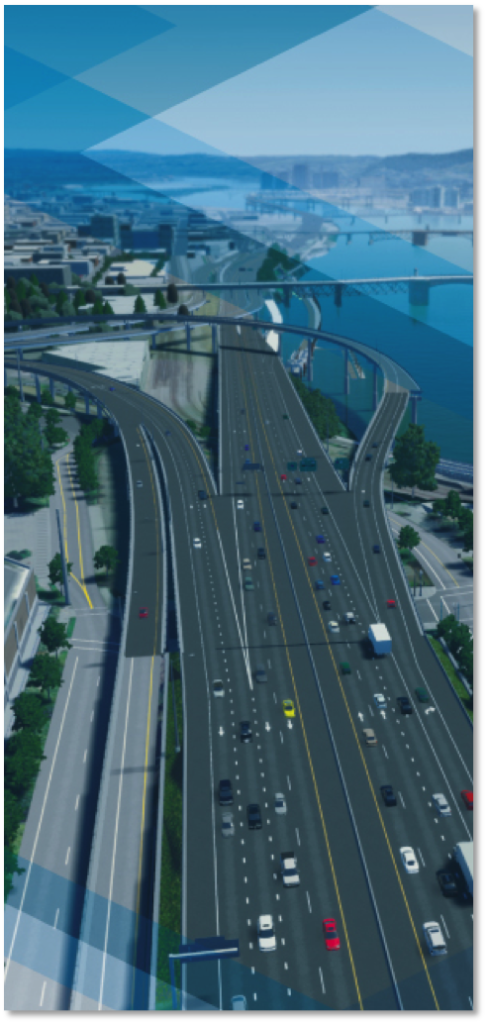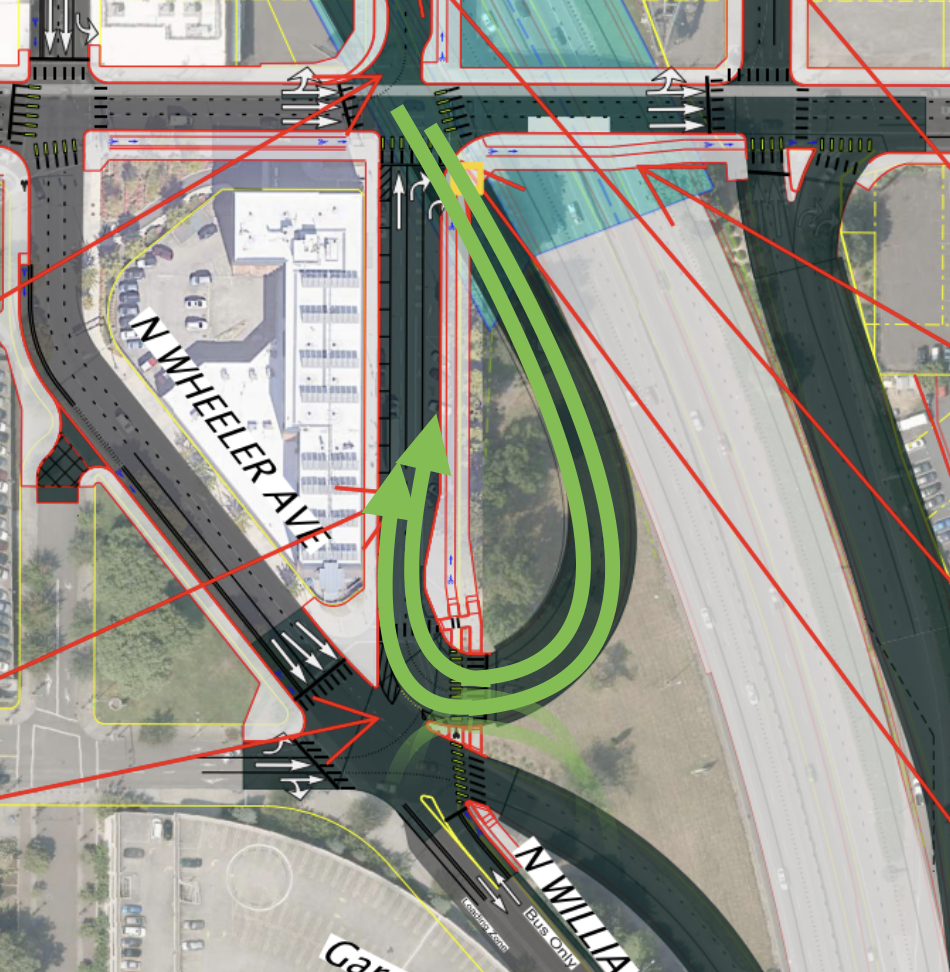City of Portland raises big questions about the I-5 Rose Quarter freeway widening project (translated).
Last month was the deadline for comments on the supplemental environmental analysis for the proposed $1.45 billion I-5 Rose Quarter freeway widening project.
Our friends at Bike Portland got a copy of the city’s comment letter, signed by then Portland Bureau of Transportation director Chris Warner (who’s since moved on to a position in the Oregon Governor’s office).

At City Observatory, we’ve documented the myriad problems with the project, including increasing pollution, worsening safety, failing to solve congestion, and further undermining neighborhood livability. The City of Portland’s official comment letter echoes many of these concerns, but in a stilted bureaucratic dialect that may not be intelligible to all readers. As a public service, City Observatory offers its translation; City of Portland comments are shown in quotes, our accompanying translation is in italics.
CITY: “Revisions to the project are needed for alignment with city policy as it relates to prioritizing people walking, rolling, bicycling, and taking transit.”
Translation: The project is designed to speed cars on and off the freeway, and on local streets, with dangerous double turn lanes, wide radius corners, and other features that endanger non-car travelers.
CITY: “Lack of clarity in how commitments made as part of the Independent Highway Cover Assessment are provided for. Specifically, how the design will accommodate the community vision to develop a highway cover that can be catalytic in the restoration of high-quality land and provide opportunities for community wealth for generations to come.”
Translation: ODOT promised buildable covers, but is providing no money for their development, and foisting this off on the city. Plus, the covers are designed only for “lightweight buildings.” “Lack of clarity” means “you haven’t told us where the money will come from for the promised redevelopment.”
CITY: “Traffic analysis needs to be completed that reflects that the project area is designated as a Multimodal Mixed-Use Area, which provides flexibility for determining significant effects of land use actions, by lifting mobility standard requirements at ODOT facilities while still applying transportation standards such safety and multimodal access.”
Translation: ODOT has designed the freeway for a 70 mph design speed, and prioritizes car movements over local use; this will block the city’s plans to make the area safe for people biking and walking, and attractive for development.<
CITY: “. . .traffic design must consider the impact of pricing on I-5 and the potential for the planned Regional Mobility Pricing Program to change or lower vehicle travel demand in the area.”
Translation: ODOT exaggerated traffic forecasts, and failed to consider that planned road pricing (which is needed to pay for the project) will reduce traffic levels and congestion. (ODOT’s own studies show this would eliminate the need to widen the freeway)
CITY: “The project must develop traffic management that provides safe and efficient movement of freight and event district traffic management, including safe and cohesive local and regional access and circulation for all modes.”
Translation: ODOT’s plan would create a dangerous hairpin off-ramp on I-5, which trucks can’t navigate, and which creates a circuitous connection to local streets and the the Moda Center, which will add more than a million miles of driving to local streets.

The letter signals some real concerns with the already troubled I-5 Rose Quarter Freeway widening project. Unfortunately, the subtext of the letter leaves it open to the interpretation that these are minor tweaks the be addressed later in design. That’s far from the case: the problems (the width of the freeway, its dangerous hairpin off-ramps, questionably buildable covers, and traffic inducing size, and hazards to those traveling by bike and on foot are baked into the current design. The only meaningful way to address these significant impacts is through a full environmental impact statement, something ODOT is desperately trying to avoid by seeking a “finding of no significant impact,” a claim that’s impossible to square the the facts laid out in the city’s letter.


